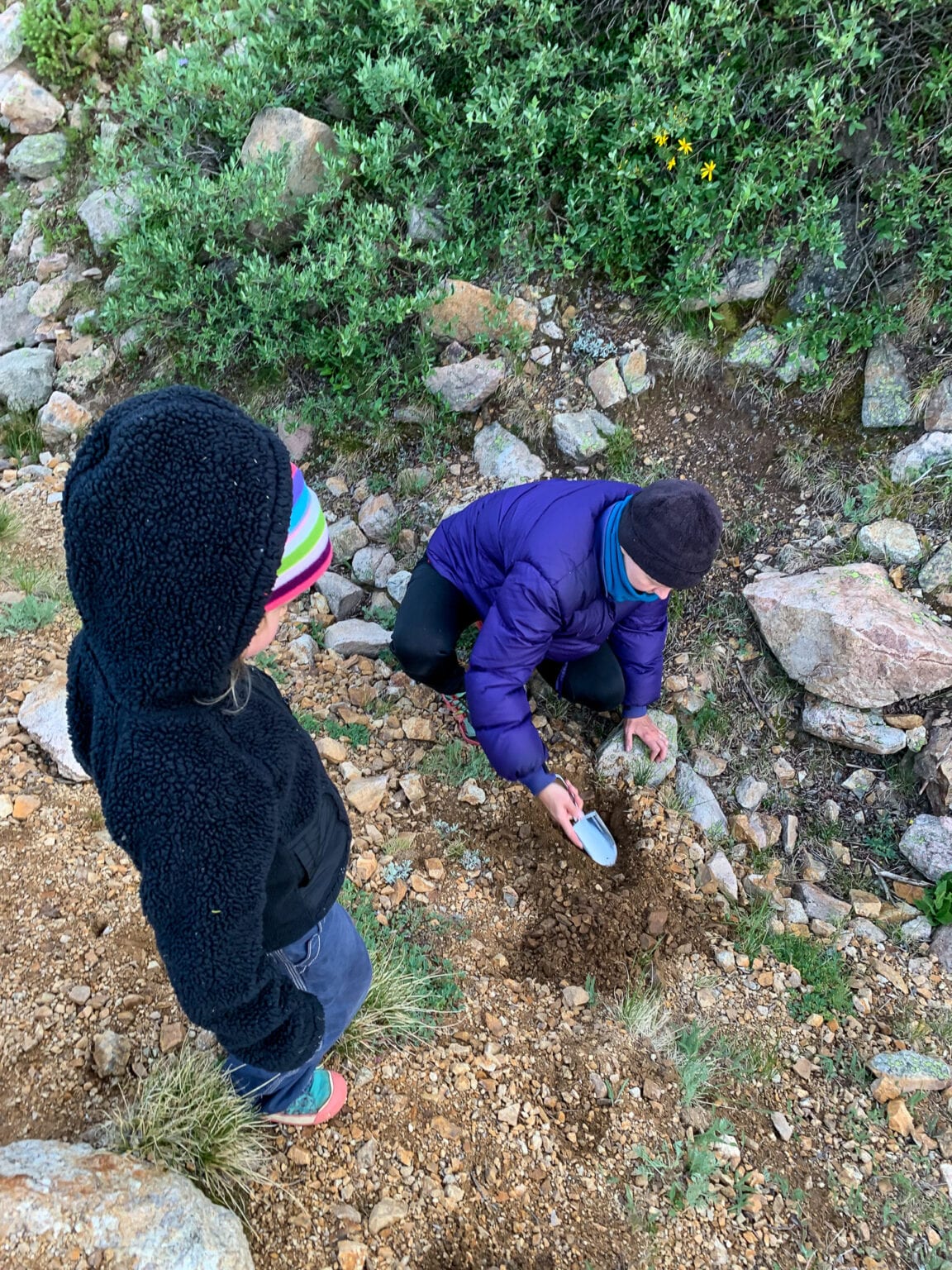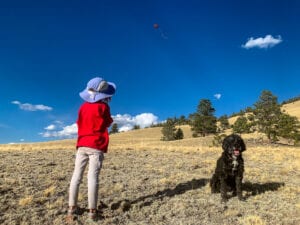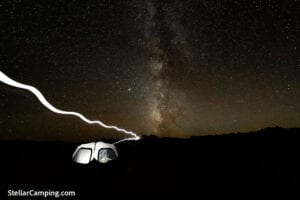Peeing and pooping while camping

Peeing and pooping is a relatively straightforward affair at developed campgrounds, which mostly have pit or flush toilets. When backpacking or car camping outside a campground, you’ll have to rough it. But fear not! Peeing or pooping in nature can actually be a less smelly and more pleasant experience than using a communal toilet.
The topic of poop requires the most attention. It’s important to follow best practices for #2 to avoid contaminating water bodies, spreading disease, and creating icky situations for other visitors. Some special locations, like narrow river canyons, may require campers to pack out their waste. Your options are wag bags or DIY bags.
Most places, you’ll simply need to dig a cat hole using a trowel. A cat hole should be about 6 inches deep (except in the desert, where it should be just 4 inches deep) and several inches wide. Be sure to dig your hole at least 200 feet (about 70 paces) from water bodies, trails, and campsites. When choosing the right place for your cat hole, try to find loose soil and avoid digging up plants. Where possible, select a sunny rather than shady spot to aid decomposition. If you simply can’t dig soil in the vicinity of your campsite, a second-best alternative is to dislodge a large rock, poop, then replace the rock on top of your poop.
When it comes to wiping, many experts recommend packing out toilet paper in a sealable plastic bag, which can be kept within a second specially marked or located bag. It’s particularly a good idea to pack out your toilet paper when you’re camping in the desert. At a minimum, use biodegradable toilet paper. Don’t burn toilet paper—it’s not worth the risk of wildfire. Some campers prefer to use stones, pine needles, snow, or leaves as an alternative to T.P., but do make sure you’re not using a poisonous plant like poison ivy!
When the deed and the wiping are done, cover your poop and the wiping material with the dirt from the cat hole. A few stones on top can signal to other visitors that it’s not an ideal place for them to dig their own hole. Have hand sanitizer available, if you don’t have ready means for washing hands.
Pee is not as significant an issue as poop, but several guidelines still apply. Don’t pee within 200 feet of small bodies of water or campsites. Do your best to avoid hitting plants, since wild animals can be attracted to the salts within urine and can disturb pee-laden vegetation. In settings where soils and vegetation are fragile, such as alpine environments and deserts with cryptobiotic soils, try to pee on rocks.
Peeing can be a bit more challenging for women. Most women find that it works fine to simply push down their pants and underwear and pee while squatting wide, facing downhill. Splashing can be alleviated by peeing on a softer material like pine needles. Where it’s difficult to find a private location, tying a long skirt or a jacket around the waist can help. Female urination devices like The Tinkle Belle or Venus to Mars allow women to pee standing up, or in tents when weather is bad. Ladies, please don’t leave toilet paper out and about! If you prefer not to drip-dry, you can bring a zip-top plastic bag in which to keep used toilet paper. Another neat alternative is the Kula Cloth.
If you’re camping with kids, you may want to plan ahead for emergency nature calls by pre-digging a cat hole in a good location. Diapers should always be packed out, never burned in a campfire.
Some campers prefer to bring their own toilets. That’s beyond the scope of our experience, but you can read about options here.






